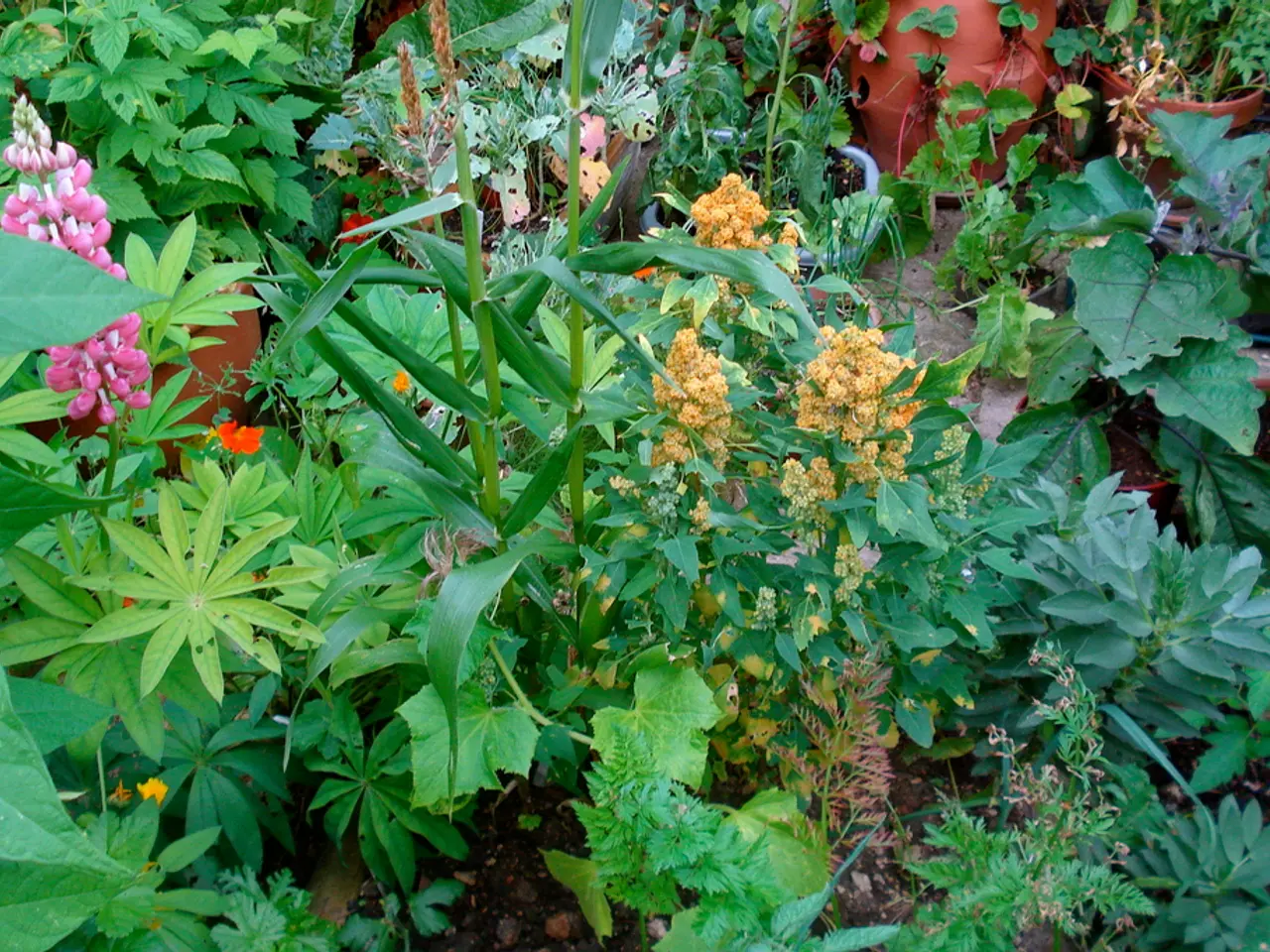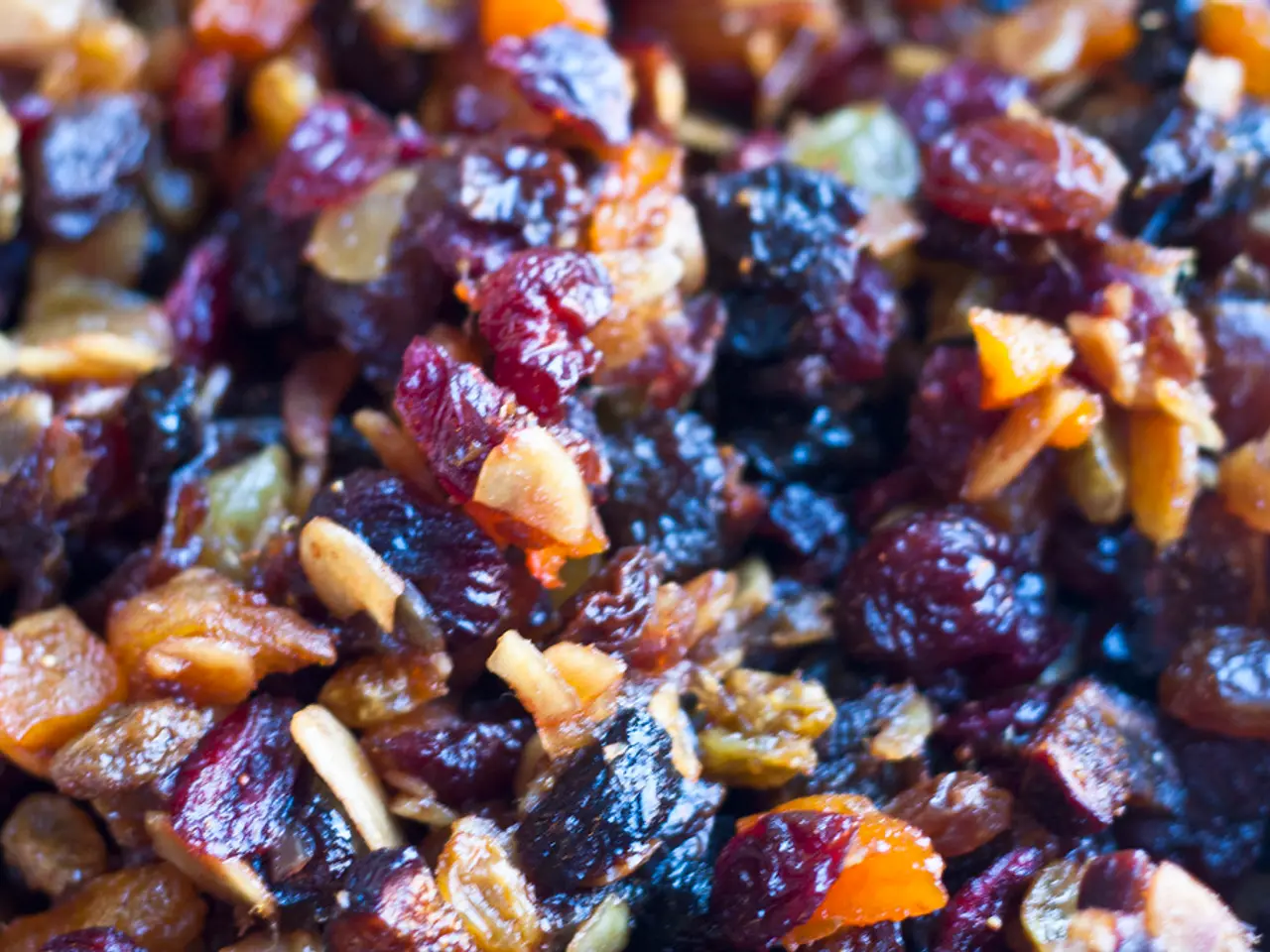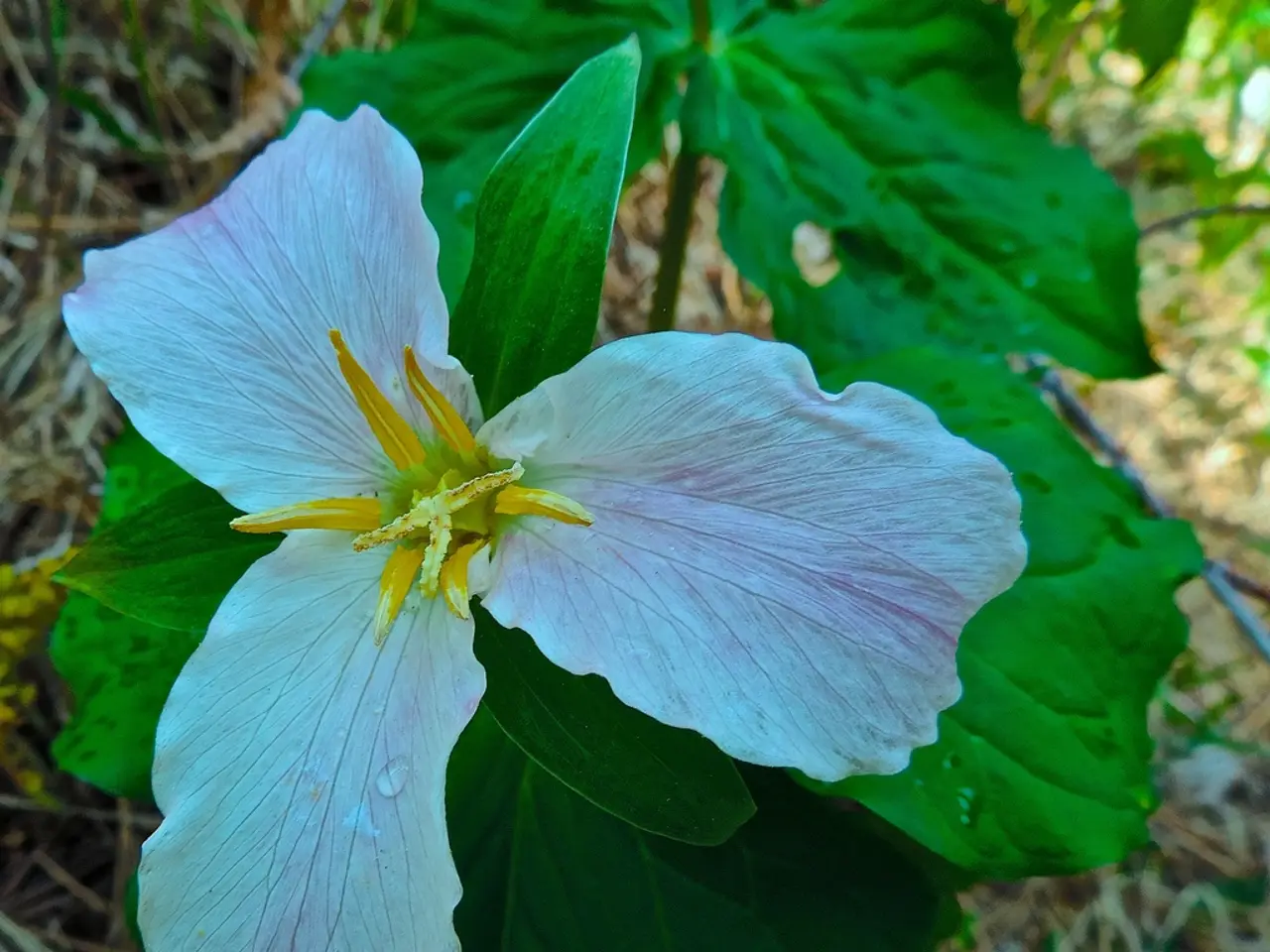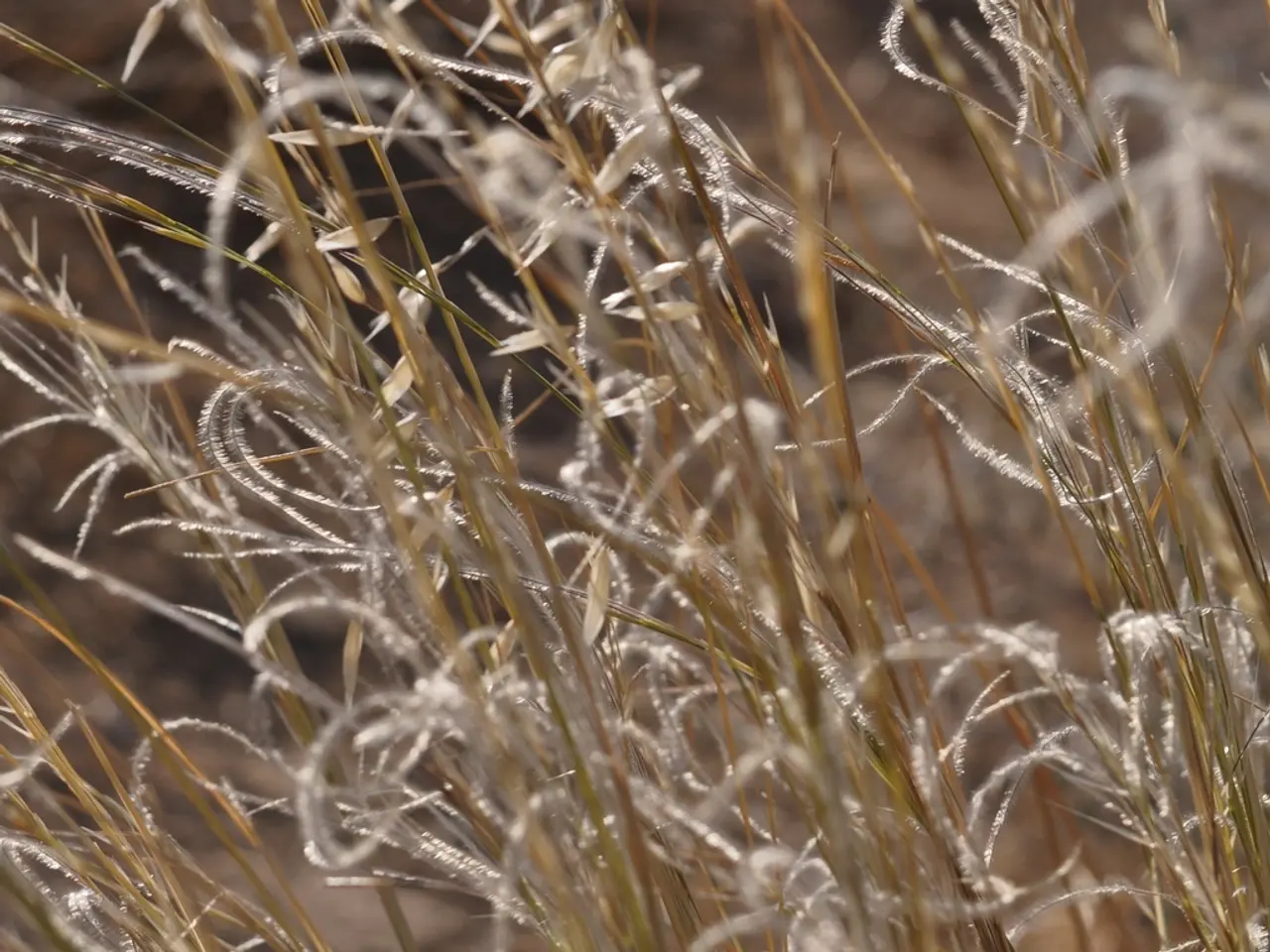Overhaul Your Garden's Pest Management with 27 Effective, Chemical-Free Methods for Every Green Thumb
Natural Garden Defense: A Smarter, Greener Approach to Pest Control
Worrying about pests in your green space doesn't mean you have to massacre nature with harmful chemicals! Learn how to enjoy a healthy, pest-free garden using Mother Nature herself as a weapon. This amazing compilation of 27 efficient, easy-to-use methods guarantees you can keep your plants thriving without jeopardizing the environment.
So, gear up for a pest-free paradise!
1. Neem Oil Shoot 'em Down
Neem oil is a natural, neem tree-derived pesticide. Interfering with insects' hormones, it prevents them from feeding or reproducing. Just blend it with water and spritz directly onto plant leaves. Proven effective against aphids, whiteflies, and spider mites. Don't forget to spray late in the day to shield helpful bugs like bees! Reapply weekly if pests stage a comeback.
2. Diatomaceous Earth: Murder on the Rocks
This white powder came from crushed fossils ages ago. When crawling bugs collide with it, they succumb to dehydration. It's toxic to slugs, beetles, and ants but people and pet-friendly. Sprinkle it around plants or garden beds. Reapply after rain or watering. Always remember to wear a mask when handling it!
3. Herbal Hoodwinking with Companion Planting
Some plants magically shelter others by growing close together. For instance, basil boosts tomatoes by keeping mosquitoes away, while rosemary and sage confuse carrot flies and cabbage moths. Mixing such herbs and flowers into your garden can trick pests and increase soil health and plant growth. Experiment with combinations like marigolds with beans or squash!
4. Stinky Garlic Spray: Pest-be-Gone!
Garlic is a powerhouse of strong oils that repel many bugs. Simply blend garlic with water and a drop of dish soap, strain, and spray onto leafy greens. Effective against aphids, beetles, and caterpillars. The smell may linger, but pests won't! Reapply every now and then, or after a rain.
5. Scorching Chili Pepper Spray: In Six Flaming Inches
Chilies have a potent chemical that bugs detest. Boil chopped peppers in water, cool, and spray on your precious plants. Basically, this zapper keeps beetles, mites, and caterpillars at bay. Wear gloves when dealing with hot peppers, and be thorough - keep the mixture away from your eyes and mouth. Spray early in the morning or evening.
6. Soapy Water Insect Spray: Say Goodbye to Gremlins
Mix mild dish soap with water to create a simple and potent pest spray. It causes insects' outer shells to disintegrate, making them parched and dead. It targets soft-bodied pests like aphids and mites. Before unleashing this spray, test it on one leaf to avoid harming your plants. Apply in the early morning to prevent leaf burn, then rinse plants after 24 hours.
7. Slithering Beer Traps: A Deadly Fix for Slugs
Slugs can't resist the allure of beer. Dig a shallow dish, fill it with brew, and voila! Slugs crawl in and are trapped, unable to escape. A super affordable method that's effective overnight. Just remember to dispose of and refill the beer every two to three days. Keep the trap at the level with the soil surface.
8. Copper Tape: A Shocking Barrier for Snails and Slugs
Copper gives slugs and snails a jolt when they touch it, stopping them in their tracks. Defend garden beds, pots, and plant bases with copper tape. It forms a long-lasting barrier, allowing you to say "so long" to these pesky pests. Just remember to clean it regularly for continued effectiveness. You can also wrap it around tree trunks. It's furry-friend safe!
9. Row Covers: A Pest-Free Haven under Quilted Skies
Row covers are lightweight, fabric sheets that cover plants, preserving them from bugs while letting sunlight and rain shine through. Outstanding for leafy greens and brassicas, rows covers even guard plants from wind damage. Just make sure to remove covers during flowering to let your lovely pollinators in!
10. Aluminum Foil Mulch: Let Light Shine for a Pest-Free Garden
These covers delicately rest upon plants without frames. They repel beetles, worms, and leaf miners, ideal for crops like lettuce or spinach. They also conserve warmth and moisture. Remember to remove them before harvesting or when plants bloom. Care for these covers gently and reuse for several seasons to save a buck!
11. Sticky Traps for Flying Pests: The Web they Weave
Yellow sticky cards tempt bugs like whiteflies and gnats. The sticky surface attracts them, and once they land, they can't escape. Hang traps near plants or above garden beds. Be sure to monitor and replace them when filled. These traps not only trap pests but also help detect pest problems early. Use them in greenhouses and raised beds.
12. Eggshell Barriers: A Crispy End for Soft-Bodied Pests
Baked, crushed eggshells are sharp and uncomfortable for slugs. Shower them around plant bases to hinder their journey. Additionally, the shells add calcium to the ground as they decay. Just rinse them before use to ensure they don't lure flies. Replace after heavy rain. A smart way to recycle kitchen waste!
13. Citrus Traps: A Sweet Entrapment for Aphids and Ants
Orange and lemon peels appeal to pests like ants and aphids. Placing peels around infested plants draws in the insects, allowing you to eliminate them effortlessly. You can deploy these traps indoors and outdoors. They work best for small infestations and smell fresh!
14. Attracting Ladybugs: Beneficial Buggies to the Rescue
Ladybugs dine on aphids, mites, and whiteflies, making them effective pest fighters. Attract them by planting dill, fennel, or yarrow in your garden. You can also release live ladybugs at night. Provide water and shelter to keep them around, and avoid using harmful chemicals that turn them away.
15. Attracting Lacewings: Hungry Lace and Little Ones
Lacewings are greenish insects that love eating soft-bodied pests. Their larvae especially excel at controlling pests. Draw them in by planting daisies, cosmos, or sunflowers. Some stores sell lacewing eggs for home use. Before welcoming these helpful critters, remember to avoid using pesticides that could harm them!
16. Planting Marigolds: The Floral Fungus Fighter
Marigolds release the aroma of coal tar and are known for fighting root pests. Place them near beans, tomatoes, or lettuce, and they'll protect your precious plants from nasty nematodes. Choose French marigolds for the best results and replace them yearly. They also serve as pollinator magnets!
17. Introducing Nematodes: Nature's Tiny, Efficient Hunters
Good nematodes gobble up pesky soil pests like grubs and weevils. To start, mix them with water and pour the potion into your soil. They are safe for humans, pets, and plants, making them a low-risk, effective option for pest control. Apply them in the spring or fall when the soil is moist and humid.
18. Using Coffee Grounds: Go Beyond Brewing Coffee
Spreading used coffee grounds around your plants can deter ants, snails, and slugs due to their overwhelming smell. This natural repellent works around plant bases, making an excellent barrier for these pests. On the plus side, coffee grounds add nitrogen to the soil, strengthening your plants!
19. Essential Oils Spray: Potent Pest Protection
Blend essential oils like peppermint or eucalyptus with water and spray around your garden, focusing on edges, doors, pots, and plant bases. The powerful aroma repels a range of pests, leaving your garden smelling fresh and protected. Reapply every few days, or after rain. Keep in mind that some oils can harm delicate flowers, so spray cautiously!
20. Mulching with Straw: A Layered Line of Defense
Straw acts as a protective layer that shields plants from beetles, squash bugs, and other nasty critters. By covering the soil with straw, you hide plant stems (with a sneaky bonus of weed control). After some time, replace the straw when it decomposes. A simple method that boosts plant health!
21. Crushed Clove or Cinnamon for Soil Fungus Control: A Potent Punch
Both spices are potent fungus fighters. Sprinkle a bit around damp soil in pots or seed trays to stop mold and fungus in their tracks. Apply with caution near young sprouts, and the pleasant aroma also repels gnats and flies. Refresh the layer every week or after watering, and store spices in a dry place for reuse.
22. Companion Flowers: A Floral Diversionary Tactic
Plant flowers like nasturtiums to lure pests away from your veggies. Place them near beans, squash, or tomatoes, and the pests will focus on the flowers instead of your precious crops. These eye-catching flowers also attract pollinators and add a splash of color to your garden!
23. Baking Soda Fungicide for Plants: A Natural Mold and Mildew Fighter
Mix baking soda with water and a little oil to create a harmless solution for eliminating mold and mildew on plants. Spray gently on leaves affected by these fungi. The mix works wonders on roses, cucumbers, and squash. Before unleashing this concoction, be sure to test it on one leaf first. Apply in the early morning. Repeat this process every week as needed.
24. Vinegar Spray: A Weed Eliminator
Vinegar dries out weeds without harsh, chemical-filled sprays, making it an ideal option for controlling weeds in your garden and even your driveway. Simply spray vinegar on sunny days for the most effective results. Be careful when using it near your plants, as it can potentially damage delicate species. Reapply if weeds return.
25. Handpicking Large Pests: A Mano a Mano Showdown
Snag large bugs like beetles and caterpillars by hand and drop them in soapy water. Regularly search your garden for these intruders, especially early in the morning or evening. Be sure to wear gloves if you prefer, and be gentle but persistent. This method is an effective way to deal with pests up close and personal.
26. Encourage Birds: The Friendly Avian Infantry
Birds consume caterpillars, beetles, and other pests that plague your garden. Install feeders or birdbaths in your garden, and plant shrubs and trees that provide shelter and berries. Be sure to avoid using loud, harmful chemicals that could send these helpful friends flying away.
27. Ash Barriers: A Natural Slug and Snail Sphere of Influence
Sprinkle wood ash around the base of your plants to create a barrier that pests avoid. This method also adds potassium to the soil, aiding in the health of your plants. Just be sure to use clean, untreated ash. Keep it dry so it doesn't lose effectiveness, and avoid using it near acid-loving plants.
Guard Your Garden the Green Way
With so many natural options, chemical warfare is a thing of the past! These pest control techniques not only protect your plants but also keep our little corner of the world a little greener. Experiment with different methods, develop your own techniques, and see which ones work best for your gardening niche.
Incorporate companion planting by mixing basil, rosemary, and sage among your garden to confuse and ward off pests, improving soil health and plant growth. (herbal hoodwinking with companion planting)
Spread crumbled eggshells around plant bases to create a barrier that deters slugs from approaching your delicate plants. (Eggshell Barriers: A Crispy End for Soft-Bodied Pests)








